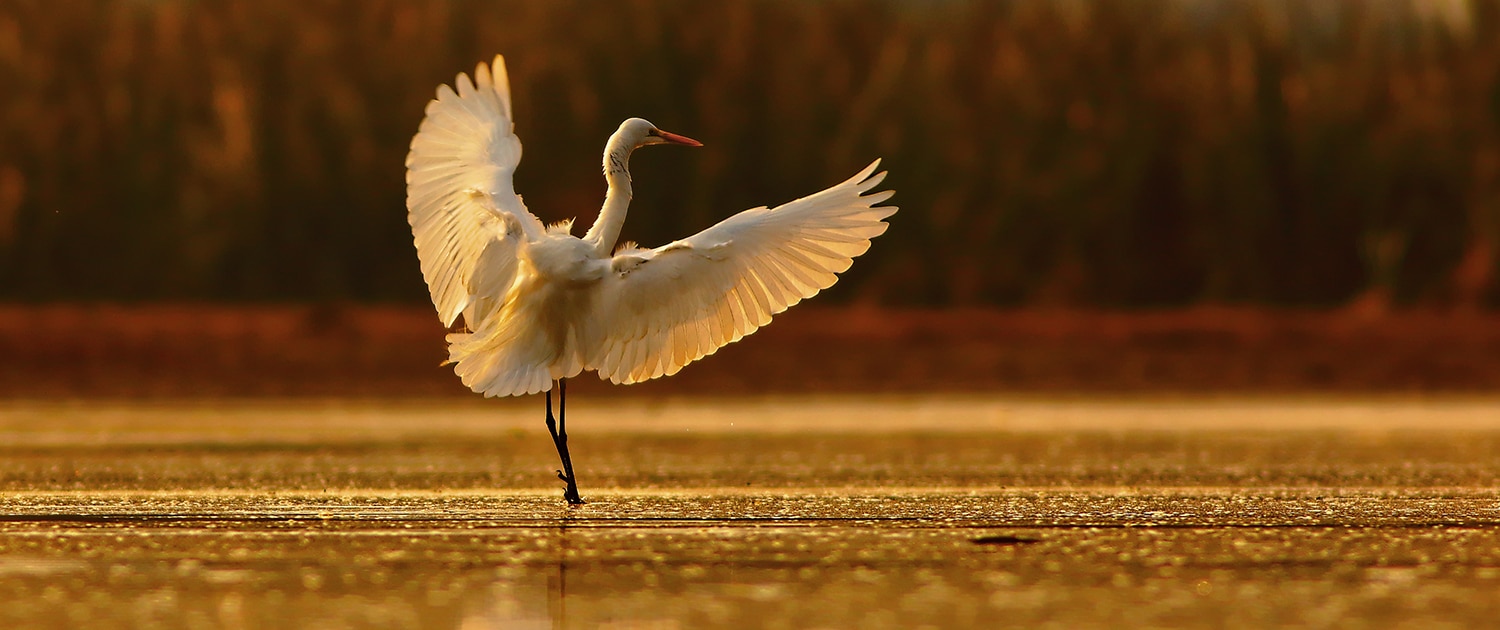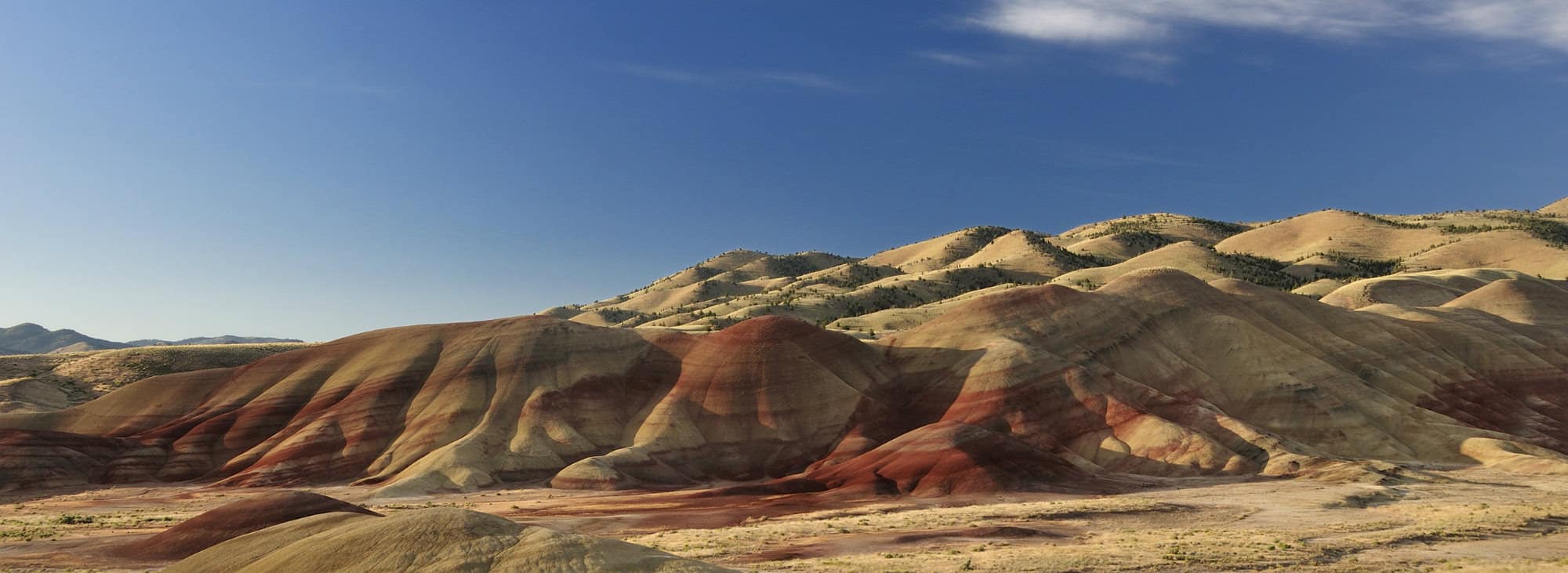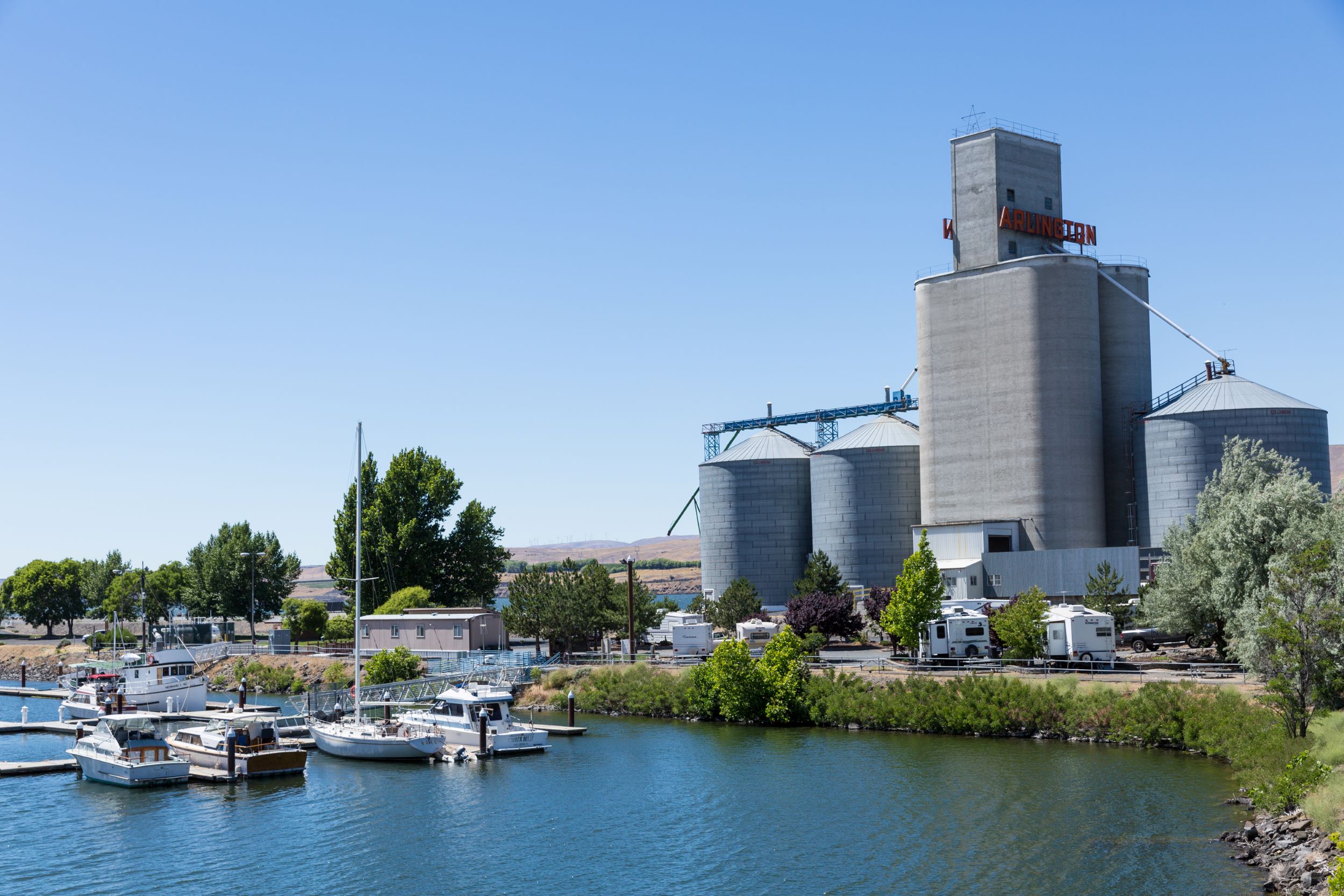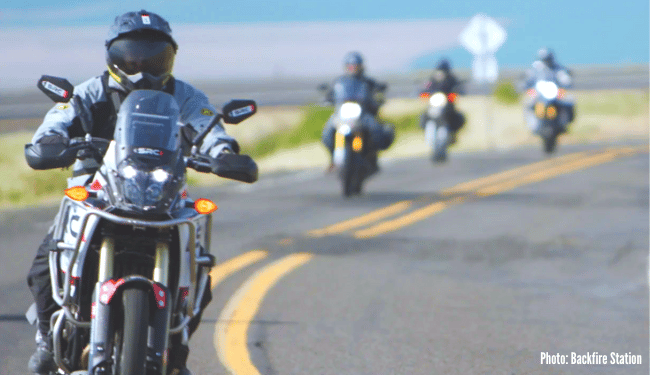Nature Lover’s Guide to the John Day River Territory
With snowcapped mountains, lush forests, rugged canyons and prehistoric fossil beds, the John Day River Territory is a playground for nature lovers. The region’s natural beauty invites visitors to stay awhile; to bike, hike, fish, swim, paddle and savor life slowed down to perfection. It’s the perfect destination for those who want to trade in life’s hustle and bustle for a few days of peace, serenity, and awe-inspiring views.
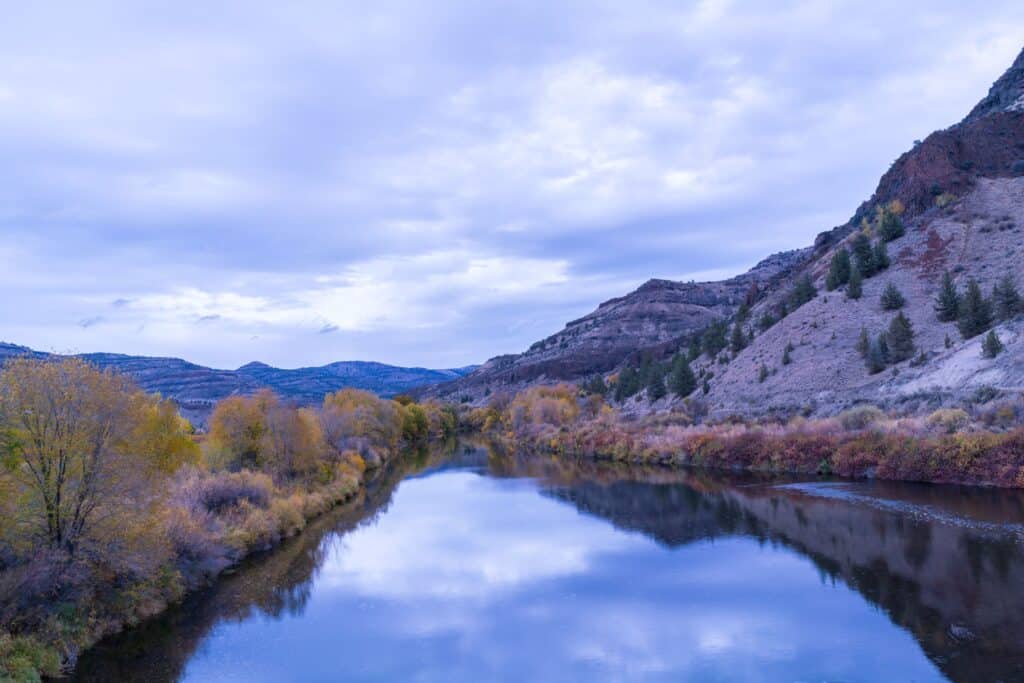
John Day River – photo credit Joni Kabana
Day 1
Begin the day with breakfast in picturesque Prairie City at cozy Roan Coffee Company. Sip a latte and take in the view of the majestic Strawberry Mountains rising in the distance over rolling hills of grassland and grazing cattle.
Grab an extra muffin then set off for the Strawberry Lakes Campground and Trail. Plan to spend 3-4 hours for this 6.5 mile hike which begins at Strawberry Campground and includes forests, rocky cliffs, a gorgeous waterfall and two peaceful, trout-stocked lakes. With more than 125 miles of hiking trails, the Strawberry Wilderness Area also offers shorter and longer hiking opportunities depending on your interest and abilities.
Return to Prairie City then head west on Highway 26 to Clyde Holliday Recreation Site, a green, shaded campground on the banks of the John Day River. Make camp and take your pick of the campground’s many outdoor adventures. There are plentiful opportunities for fishing, hiking, and viewing the local herds of elk and deer. For a unique camping experience, consider renting one of the two authentic teepees.
Spend the afternoon and evening relaxing by the rushing waters of the John Day River, roasting marshmallows over a campfire, and sleeping under a canopy of stars.
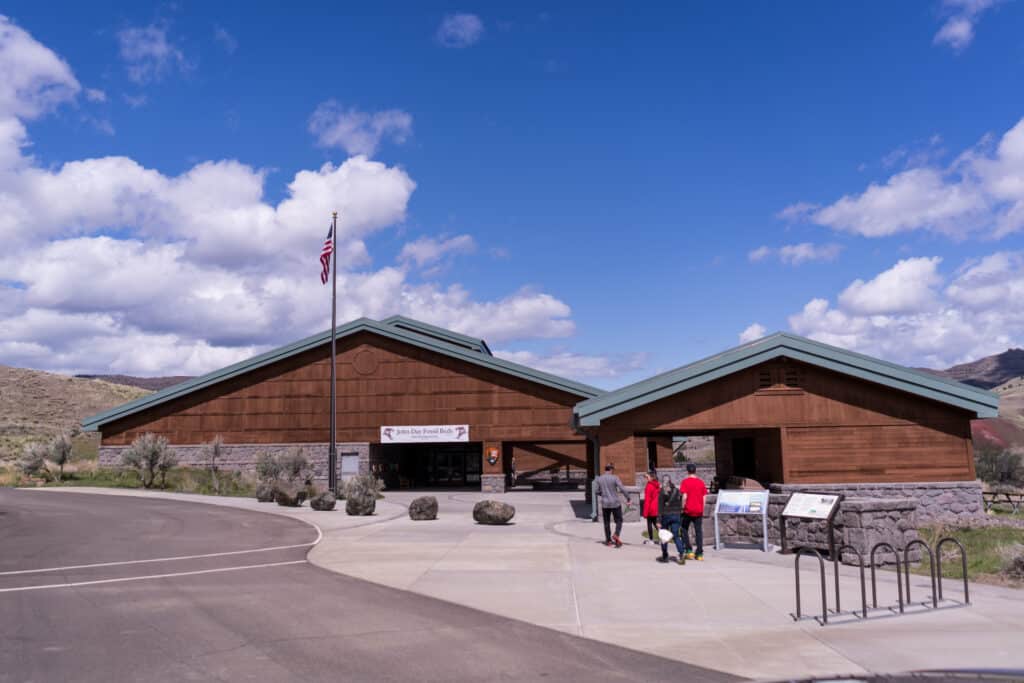
John Day Fossil Beds Visitor Center – photo credit Joni Kabana
Day 2
Pack up camp and continue your journey west along Highway 26. Just a few miles beyond Dayville, you’ll come upon Picture Gorge. From the outside, it looks like a geological wonder, a deep crevice slicing through the jagged rocks and hillsides, but the real treasure lies on Picture Gorge’s walls: sacred, centuries-old pictographs. The pictures, depicting humans, animals and geometric designs, were painted by Native Americans using pigment made from local minerals.
Just past Picture Gorge lies the Sheep Rock Unit of the John Day Fossil Beds National Monument. The area is distinguished by its Turtle Cove strata, a striking blue-green rock layer produced by millions of years of volcanic ash accumulation.
The Sheep Rock Unit is equipped with picnic areas and plentiful hiking opportunities to take in the area’s awe-inspiring natural beauty and learn about the flora and fauna that inhabited these lands over the past 25-30 million years.
Don’t miss the Thomas Condon Paleontology Center, the crown jewel of the Monument. Large bay windows allow visitors to peek into this working paleontology lab where scientists gently unlock the fossil remains from their rocks. An impressive exhibit hall showcases the fossil record found here with colorful dioramas, replicas of animals and plants, and a soundtrack to match. There are exhibits designed for children too, as well as a chance to handle replica skulls and other bone fragments through daily ranger-led talks.
Backtrack on Highway 19 and continue west on Highway 26 to Mitchell and the Painted Hills Unit of the Monument just beyond.
One of Oregon’s 7 Wonders, the Painted Hills are named for the vibrant mounds of gold, red, black and orange soils that punctuate these hills. The Monument welcomes guests with a shaded picnic area, restrooms, and interpretive signs. Short hiking loops throughout the park allow visitors to get a close-up view of the unique, multicolored bentonite soil.
When you’re finished exploring, return to Mitchell for dinner and a good night’s sleep at Painted Hills Vacation Rentals, a charming, garden oasis.
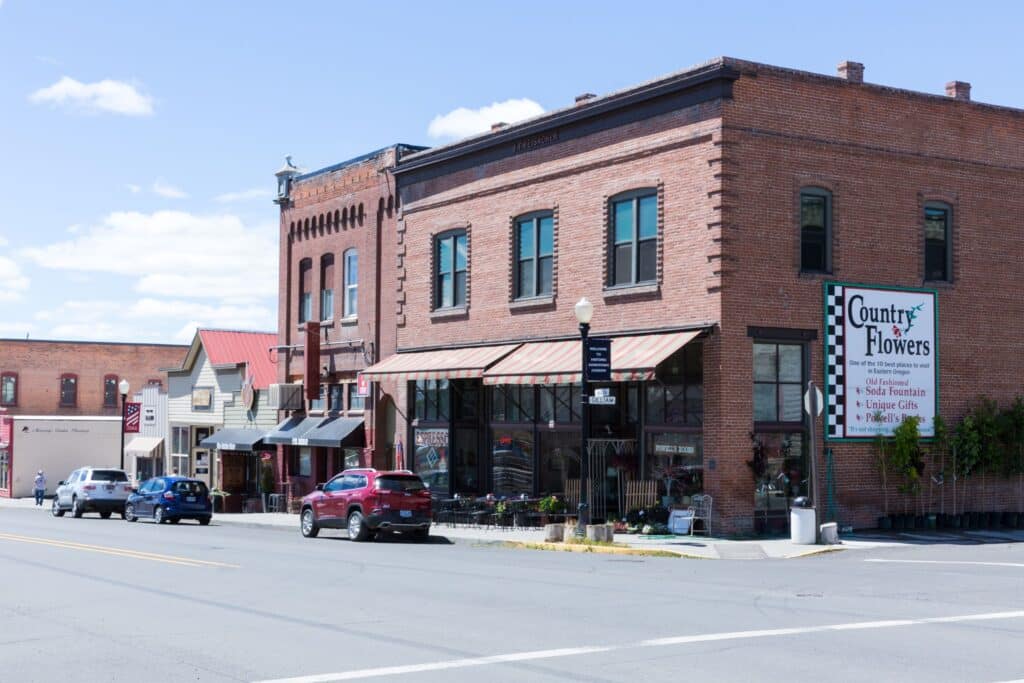
Country Flowers in Condon, OR – photo credit Joni Kabana
Day 3
The third unit of the John Day Fossil Beds National Monument is located off Highway 218 near the aptly named community of Fossil.
The rocks of the Clarno Unit capture a period in time where tiny four-toed horses and massive rhino-like brontotheres roamed hills covered in lush, dense vegetation. As you drive through today’s desert-like scene — palm trees replaced with juniper and sagebrush — it’s hard to imagine this region as the semitropical forest it once was.
Roughly 44 million years ago, a series of volcanic mudflows swept up plants and vegetation from this period and preserved them in the Palisades. Scientists have identified petrified wood from 173 unique species of trees, as well as leaves, fruits, nuts, seeds and shrubs, vines and other plants preserved within the Clarno Unit’s rock layers. You can get a better look at them via the Trail of Fossils, a 1/4 mile loop that snakes its ways past boulders containing the visible remains.
While digging is prohibited in the Monument, budding paleontologists can unearth prehistoric treasures in the rich fossil beds behind Wheeler High School. Roughly 33 million years ago, the area was the bed of a shallow lake. Today, it is one of Oregon’s only legally accessible fossil digs, containing the fossilized remains of deciduous trees that grew along nearby streams and wetlands. Loaner hammers, shovels, and buckets for toting rocks are available. There is a small fee for each explorer.
Nearby, the Oregon Paleo Lands Institute is a hub for hands-on exploration, offering interactive displays focused on the John Day Basin’s geological history. Be sure to call ahead for hours.
20 miles north, Condon is a prime spot to fuel up for the rest of the day’s adventures. Country Flowers, an old-fashioned soda fountain with locally-crafted gifts and an Eastern Oregon branch of the famous Powell’s Bookstore, anchors the charming, historic Main Street.
A short detour east on Highway 206 and Lonerock Road leads to a beautiful valley and the quaint community of Lonerock, a once booming pioneer town. Look for the huge rock — the town’s namesake — which looks as if it fell from the sky and happened to land next to the sparkling Methodist church.
30 miles northwest of Condon lies Cottonwood Canyon State Park, where jagged cliffs, steep canyon walls, and the untamed John Day River provide the backdrop for Oregon’s second largest state park.
Or head north to Arlington, a peaceful riverfront community where nature lovers can try their hand at windsurfing or stand-up paddle boarding on the mighty Columbia River or just spend a lazy afternoon taking in Eastern Oregon’s beautiful outdoors.

